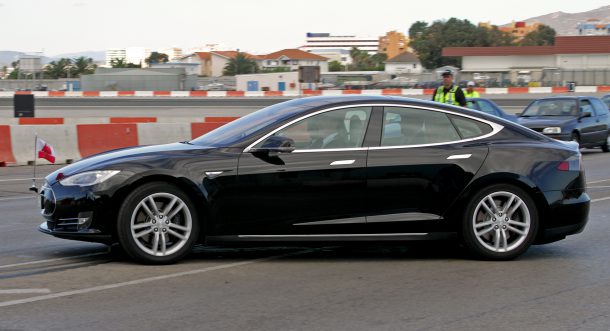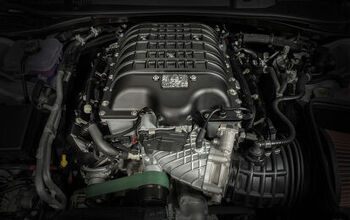QOTD: How Long Should a Street Car Be Able to Run on a Track? What If It's Electric?

I doubt that very many of you have seen Robb Holland’s series over on Jalopnik about turning a salvage-title Z06 into a Pikes Peak car. That’s okay; unless you’re a particular fan of Corvettes or of Robb Holland you aren’t missing much.
At the heart of it, the series is a fairly typical exercise in what I call “Journalist Stone Soup Motorsports” — you call everybody in the world to get as much free stuff as you can and then you offer to mention them on your website. Some people are much better at this than others; Mr. Holland’s vehicular opus looks like it consumed about a thousand man-hours of free labor and maybe fifty grand worth of free stuff. Feel free to compare that to the incompetent promotional efforts of your humble author, who won an AER race last month with uh, um… some year-old, half-worn tires courtesy of Dunlop. (Thank you, Dunlop!) This is no doubt due to the fact that Robb is a handsome, well-liked television personality, whereas I’m primarily notable for being kicked out of NASA Performance Touring twice in four seasons.
There is, however, something of value in Robb’s most recent article. In the process of excusing the Corvette Z06 from overheating shenanigans (hmm… why does this sound familiar?), he asks, “Personally, I think the whole [overheating] thing is load of crap… First, how long should a street car be able to run on track before having to stop? One minute, five minutes, 100 minutes? Twenty-four hours? What’s the benchmark? A race track is a very different environment than the street. You can’t design a car to work well in both.”
It’s easy to dismiss this by pointing out all the cars that can complete SCCA and NASA sprint races with bone-stock drivetrains, but if the question isn’t relevant now, it’s about to be extremely relevant. The electric car is coming, and it’s not going to handle racing terribly well. In fact, it’s not even going to handle hot weather or off-track high speeds terribly well. So what does it need to be able to do?
Unless something major changes in the way electric car batteries operate — which is always possible — it seems likely that the electric cars and trucks of the future won’t have quite the reserve capacity and durability that we take for granted in gasoline cars. So the real questions are: How long should an electric car be able to run on track? What amount of heat-related degradation is acceptable? Are you okay with knowing that your car is incapable of running over 100 mph for sustained periods of time?
These seem like silly questions now; after all, if you don’t like the lap times of the Model S or the hot-weather performance of the Leaf, you’re free to go buy a regular car. But what about fifteen years from now? What if we really do end up living in a Crapsack World of automotive performance? Whatcha gonna do then, huh?
[Image: Wikimedia Commons ( CC BY-SA 3.0)]

More by Jack Baruth
Latest Car Reviews
Read moreLatest Product Reviews
Read moreRecent Comments
- ToolGuy TG likes price reductions.
- ToolGuy I could go for a Mustang with a Subaru powertrain. (Maybe some additional ground clearance.)
- ToolGuy Does Tim Healey care about TTAC? 😉
- ToolGuy I am slashing my food budget by 1%.
- ToolGuy TG grows skeptical about his government protecting him from bad decisions.

































Comments
Join the conversation
So, the Mopar guys say the Challenger Hellcat can run for 20+ minutes on a track without issue but a Z06 overheats after a few minutes? I guess if it were an endurance race the Challenger would win? Facetiousness aside, a "performance" vehicle should be able to run a whole HPDE session without any issues.
I owned a street car that shrugged off 20+ minute track sessions in scorching hot weather. It was a goddamn Peuegot 206 2.0 turbo diesel! Twice I did full track days of 300+ km of track time during a hot summer. The instructors could not believe it. Engine temps ok, not a slightest hint of brake fade but it did eat the front tires (basically 1 track day = 2 new front tires). That was a factory geometry issue (I had it checked more than once). Compare this to the car I have now, a 2008 VW Polo GTI that starts to lose brakes after 3-4 hard applications... to say I am disappointed is a freaking understatement. And this is not even on a "real" track day but on a Nordschleife "tourist drive". This year I got fed up with feeding it expensive brake pads and switched to street ATE pads - I might still take it on a track now and then but I have no plans for it now. I refuse to punch holes in the bumper, put racing pads or big brake kit (and necessary larger wheels) on a car that I want to get rid of in two years. Fuck you, VW.